Makes and Models
Kei Cars: The Little Cars That Can
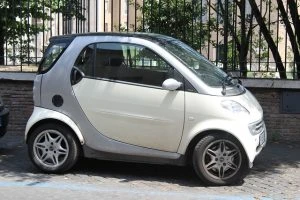
In the Western world, cars seem to have been getting bigger. For example, my early 2000 Volvo S70, a generous sedan when it came out, is shorter than the more modern “little” hatchbacks in the supermarket car park beside it. However, this isn’t the case around the world. In Japan, congestion is a problem in busy cities such as Tokyo and Kyoto, so one of the solutions was to introduce what are known as kei cars, also known as compact cars. Some people call these K-cars, as this is approximately the way the word “kei” is pronounced.
The concept of kei cars isn’t new; in fact, the Japanese government introduced the general idea and legislation related to these vehicles in the late 1940s as part of the post-WWII recovery efforts. Back then, it was more about encouraging car ownership and stimulating the local automotive industry (and you can see for yourself how well that worked, given the number of Japanese makes on Australia’s roads). Today, however, it’s more about congestion and fuel consumption.
What is a kei car? As the Japanese name suggests (in full, it’s kei-jidōsha), it’s a small car. Specifically, it’s one that has restrictions on its size, both in terms of its dimensions and its engine displacement. To qualify as a kei car, an automobile has to be no taller than 2 metres, no wider than 1.45 metres and no longer than 3.4 metres. In terms of engine displacement, the maximum allowed is 660 cc. There’s no official limit on engine power, but it’s very unusual for a factory kei car to have more than 47 kW. Not that tuning and tweaking to get a bit more power is out of the question for those interested… Most of them are speed-limited to 140 km/h, which makes sense, given that these are designed for crowded city streets, not open road rural running. The width means that they don’t handle quite as well at high speeds, so that’s another reason why their top speed isn’t as high as what you’d find with the average Toyota Corolla.
Needless to say, electric kei cars are out there as well.
To encourage the adoption of kei cars, the Japanese government has a few incentives set up. If a car qualifies to have the distinctive yellow kei plates, it’s exempt from the need to buy parking space (apparently, to buy a car in Japan, you first have to buy street space to park it). Various on-road taxes are reduced with kei cars, as these taxes are based on things such as the engine displacement and the weight.
Now, we all know that where there are large numbers of people, there are houses to fix and goods to be transported, which require vans and trucks. Your typical kei car has the sort of cargo space that would suit a minimalist (Marie Kondo would love these, if she doesn’t already). However, kei vans and kei trucks are a thing – although we’d call latter kei utes, as they’re “pickup truck” rather than a miniature version of a big old Scania. The kei vans or microvans are allowed to be taller than the kei cars, which allows the to carry more of a load and has earned them the nickname of “miàn bāo chē” (meaning “bread loaf cars” in nearby China. The kei trucks have the same basic wheelbase but a cab-chassis layout.
Because of their low fuel consumption, suitability for urban settings, kei cars and their relatives are growing in popularity in other parts of the world outside Japan. Their general cuteness relates to another Japanese concept, namely the kawaii (cute) aesthetic. Although many customers in Australia are leery about very small cars, given that physics says that they’re not going to come off well in a collision with an SUV, some popular kei marks are found in the Aussie market. Do any of these sound familiar?
- Suzuki Alto
- Suzuki Jimny
- Misubishi i-Miev
- Smart ForTwo (this one is unusual, as it’s a kei car that’s not from a Japanese marque).
These are all “regular” cars that meet the criteria for kei cars that you can find down at your local dealer (which is why we have them in our reviews page). Plenty of people also arrange for private imports of popular kei cars such as various Daihatsu models, the stylish Honda Beat coupe convertible, the Suzuki Every van, the Toyota Copen sports car and the Subaru Sambar, just to name a few. There’s even a kei version of the Mitsubishi Pajero, the Pajero Mini.
News with a French Flavour

So what’s bubbling on the stove in France? Here are some new French cars soon to be coming onto the market. These models will definitely be sold in Europe, hopefully making their way south to roll onto our showroom floors.
Renault 5
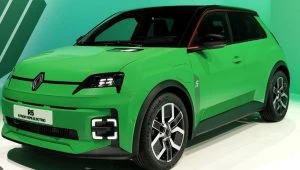
The all-new Renault 5 is back! This is a cool-as retro-inspired EV hatchback that has captured styling from the old Renault 5, embedding it into the new car’s design and detailing. Though a throwback to the iconic Renault 5 of the 1970s–1980s, the new wee car packs plenty of clever technology under its skin.
The interior is fresh and inspiring, and its clever infotainment system is integrated with Google services. The car’s two-step dashboard looks incredible, while the denim-like trim works nicely both as visual and tactile stimulation. The seats are made from recycled plastic bottles, and there are plenty of bright colour schemes for the upholstery and interior. You can even get a little wicker basket to sit in the passenger footwell for carrying your baguette! All the controls are nicely wrapped around the driver, and the new Renault 5 gets a 10.0-inch infotainment screen and a 7.0-inch digital driver’s display.
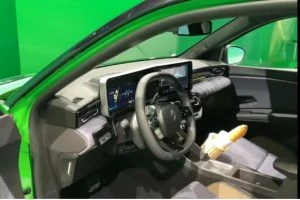
This is a direct alternative to the MG 4 and BYD Dolphin, as it boasts two battery options and a range of up to 390 km. Like the old one, this is front-wheel-driven, and there are three levels of power output to choose from. Entry-level cars have 71 kW, enabling it to run the 0–100 km/h dash in around 12 seconds. The 92-kW version performs the same sprint in 9.0 seconds. And the top of the range 112-kW version sees the little hatchback making it in around 8 seconds. There is even a suggestion that there will be a hot-hatch version of the new little Renault 5, known as the Alpine A290. So, for those looking for sizzling acceleration, this will be worth the wait.
A choice of two battery packs is available for powering the Renault 5’s electric motor. A 40-kWh pack is great for city commuting. There is also a larger 52-kWh battery pack, which gives you a further range. Both battery options will charge from 15% to 80% in around 30 minutes on a DC fast charger.
The new Renault 5 EV Hatch goes on sale in France in September of this year, where it’ll cost around £22,000 in the UK. Isn’t it great to see it back?
Peugeot 5008
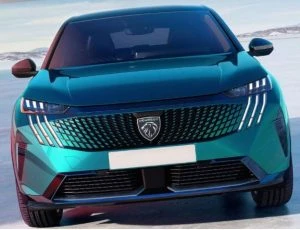
After a seven-seater EV SUV? There aren’t too many of these available; however, the new Peugeot 5008 boosts the options with its E version.
With similar styling to the E-3008, the Peugeot E-5008 shares parts with that car. Snazzy slim headlights are neatly hidden below the bonnet line, along with the car’s signature Peugeot three-claw LED DRLs. Side on, the Peugeot E-5008 is a boxy SUV, hinting towards the generous interior dimensions that are found inside.
The new interior styling and infotainment technology is brilliant. In fact, the Peugeot E-5008 has one of the most stylish and distinctive interiors we’ve seen in cars for a very long time. So, if that hasn’t pricked your ears up, then I’m not sure what else will. The multi-layered dash is wrapped in a groovy grey fabric, the major controls are angled towards the driver, and sitting proudly on top of the dashboard is a massive curved 21-inch screen that houses both the digital driver’s display and the infotainment system. The latest generation of Peugeot’s i-Cockpit system is incorporated into the style and function of the new screen.
With all seven seats in place, you have 259 litres of boot space to put your shopping bags into. A massive 748 litres of luggage space is available with the third row folded down. The Peugeot E-5008 can be had with a 98-kWh battery that is paired to a 172-kW electric motor. This is plenty of power with an equally impressive 650 km range. Then there is the 157-kW motor available, with its 73-kWh battery pack and a slightly shorter travel range. At the top of the tree sits a dual-motor Peugeot E-5008 model with close to 240 kW of power on tap. Its 73-kWh battery is said to provide this model with a range of around 500 km.
The Peugeot 5008 is also available as a hybrid version. Its rather smooth 102-kW petrol engine is mated to a six-speed dual-clutch automatic gearbox, and there’s an added electric motor to boost power and efficiency.
A plug-in hybrid joins the gang in 2025. This will use a 112-kW petrol engine paired to a 90-kW electric motor. This combined power output is nice and strong, while also making this PHEV capable of covering 75 km on electric power alone.
Citroen e-C3
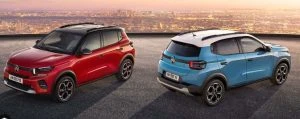
The new Citroen e-C3 has been revealed, and it is an affordable electric SUV boasting up to 315 km of range.
The e-C3 is a funky wee vehicle that is said to be a very affordable buy. It uses an 85-kW electric motor to power the front wheels, capable of propelling the car from 0 to 100 km/h in around 11–14 seconds, depending on the model.
The Citroen e-C3’s interior is comfortable, with some cool-looking fabric on the dash. The two-spoke steering wheel has that funky bit of French flair we all love. To keep the cost down, entry-level models have a mount for your phone instead of a touchscreen, which allows you to access satellite navigation, the radio, and music streaming in this way. All other models have a 10.25-inch touchscreen with all the goodies, and all cars have a classy digital driver’s display.
When these models make it Down Under, we’ll give them a full write-up in our car reviews pages, so if you’re interested, come back later for more.
What’s The Most Reliable Second-Hand Car Out There?

Some of us may have a family with teenagers; some of us may have kids in their early twenties and at university; some of us will be single and not on a rich person’s wage. There will be many of us who just can’t justify paying loads of money on a brand-new car, at least not yet. Fair enough, too, as some cars are expensive when bought new (although here at Private Fleet, we will do everything we can to help you find the best deal).
For most of us, a good second-hand car is the right way to go to ensure we can do life, get to and from work, hang out with friends, and go on that roadie around Australia that we’ve always wanted to. For 2023, by the end of the year, almost 2.1 million used cars were sold in Australia. These stats were from the Automotive Insights Report (AIR) published by the Australian Automotive Dealer Association (AADA) and AutoGrab.
Thanks to two UK businesses, Carwow and Warrantywise, here are some really good second-hand cars that should be on our radar if we are looking to buy one that has proven reliability. Carwow and Warrantywise teamed up to reveal the most reliable cars in the UK based on warranty and repair data. All of the vehicles in the analysis were outside their manufacturer warranty. In order to be included in this analysis, Warrantywise had to have at least 100 examples of a specific car on its books.
The analysis revealed that the Honda Jazz is the most reliable second-hand car you can buy, boasting an overall reliability rating of 93.7%. The next most reliable model is the Mazda 2, while the Toyota Auris (Corolla) comes in third in the rankings. Though this survey is UK-based, most of the cars that dominate the top 15 can be bought over here. And they’re probably just as good here as they are there.
Note that in analyses done in previous years, the Lexus RX was the most reliable car, but for 2022 (the year of this particular analysis), there were not enough (couldn’t find 100 of them) Lexus RXs to make the Warrantywise’s books, so let’s just chuck this Lexus into the top four most reliable second-hand cars you can buy and be done with it!
Here is a list of the 15 most reliable second-hand cars you can buy in the UK. The top four have a bit more info about them (albeit with the currency in British pounds, given that that’s where the research was done). Most of the cars in the reliability analysis can be easily looked up in our Private Fleet Car Reviews page if you want to know more about them. The Toyota Aygo and the Peugeot 107 will require some more searching, as they were are not really sold here in Australia.
1. Honda Jazz (2007–2020), 93.7% reliability score.
The top spot goes to the trusty Honda Jazz. This is a surprisingly practical small car that is also very fuel efficient. It has put in a stunning performance for reliability, with the average cost of repair being low (£424.31). The most common fault was with the central locking mechanism. The most expensive repair happened to be with the air conditioning system (£973.66). The average age of the Jazz cars in this analysis was 8.3 years old. You won’t go far wrong buying a second-hand Jazz.
2. Mazda 2 (200–-present), 89.9% reliability score.
The average age of the Mazda 2 cars was 8.4 years old, suggesting that the Mazda 2 remains reliable even as it ages. It also suggests that you will get a very good run for your money if you get a new version as well. The average repair bills were impressively low (£319.22), and the most common fault was to do with the suspension. The most expensive repair was with the electrical power steering pump (£2,422.31). The Mazda 2 is a comfortable small car with plenty of style. You can buy with confidence here.
3. Toyota Auris/Corolla (2013–2018), reliability score 89.7%.
Spacious and comfortable, the zippy Toyota Corolla/Auris is a car that is hard to fault. With an average age of 8.3 years old in this survey, these are great small/medium cars. The average repair bill was £767.84. The Gearbox/Transmission seemed to be the most common fault with the car and was also the most expensive repair (£1841.60). Based on Warrantywise’s experience, you’re unlikely to go far wrong with the Toyota Corolla. Sometimes, because Toyotas are so reliable, the first few owners may have skimped on maintenance and are happy to pass the bills onto the new owners. Make sure the car you’re looking has a service record and has a smooth-operating gearbox.
4. Mazda MX-5 (2005–2015), reliability score 86.5%.
Here is the most fun and reliable second-hand car you can buy! The Mazda MX-5 averaged 8.4 years old in the reliability analysis, with an average repair bill being a remarkably low £341.78. The most common fault was with the suspension, and the most expensive repair was with the air conditioning (£586.94), also remarkably low.
5. Toyota Aygo (2005–2022)
- Reliability score 85.5%
- Average age 7.5 years
- Average repair £375.66
- Most common fault was with the alternator.
- Most expensive repair was the clutch (£1,339.36).
6. Kia Ceed (2012–present)
- Reliability score 85.0%
- Average age 7.9 years
- Average repair £485.36
- Most common fault was wheel bearings.
- Most expensive repair was with the gearbox (£1,914.00).
7. Kia Rio (2011–present)
- Reliability score 84.9%
- Average age 8.3 years
- Average repair £528.23
- Most common fault was the gearbox.
- Most expensive repair was the turbocharger (£1,655.39).
8. Suzuki Alto (2008–2013)
- Reliability score 83.9%
- Average age 6.8 years
- Average repair £328.92
- Most common fault was the electrical system.
- Most expensive repair was with the engine cambelt (£733.70).
9.Hyundai i20 (2008–2020)
- Reliability score 82.5%
- Average age 7.6 years
- Average repair £520.25
- Most common fault was with the electrical system.
- Most expensive repair was with the suspension (£2,361.36).
10. Peugeot 107 (2005–2014)
- Reliability score 81.6%
- Average age 7.9 years
- Average repair £434.89
- Most common fault was the heater fan motor.
- Most expensive repair was the clutch (£1,128.44).
11. Honda Civic (2011–2022)
- Reliability score 80.7%
- Average age 7.2 years
- Average repair £630.86
- Most common fault was with the air conditioning.
- Most expensive repair was with the fuel system injectors (£3,055.73).
12. Renault Kangoo (2007–2021)
- Reliability score 80.1%
- Average age 7.3 years
- Average repair £576.37
- Most common fault was with the electrical system wiring looms.
- Most expensive repair was the gearbox (£1,173.00).
13. Toyota Yaris (2011–2020)
- Reliability score 79.8%
- Average age 8.2 years
- Average repair £795.89
- Most common fault was with the electrical system.
- Most expensive repair gearbox (£3,106.92).
14. Toyota RAV 4 (2013–2018)
- Reliability score 79.2%
- Average age 8.0 years
- Average payout £846.83
- Most common fault was the fuel system injectors.
- Most expensive repair was engine related (£2,055.74).
15. Fiat 500L (2012–2020)
- Reliability score 78.7%
- Average age 6.0 years
- Average repair £551.58
- Most common fault was the clutch.
- Most expensive repair was the clutch (£1,880.21).
Of course, it’s not compulsory to get a second-hand car, and the safety net of the warranty period is certainly attractive with new cars. Have a wee chat to one of our team and we might just be able to find you a brand new car for a price that’s not that much more than what you’d pay for a second-hand vehicle.
Sweet Scandi Designs For 2024
There are three main brands of Swedish-designed cars made in 2024. We all know about Volvo; some of us may know of Polestar, and maybe a few of us have heard about Koenigsegg. Apart from Scania, who makes trucks and other things, it’s the aforementioned manufacturers that are creating and making new vehicles.

Volvo
One of the oldest companies in Sweden, Volvo has been making cars since 1927, when Assar Gabrielsson and Gustav Larson worked together to make a substantial car that would be able to withstand the rigours of the Scandinavian climate. The first model was called the OV4 and had two round lights at the front, and the rectangular carriage with four wheels at the corner design that was typical of the early cars of 1900–1925. In the 1930s, Gabrielsson and Larson made the rather stylish and streamlined PV36, which proved to be a solid and comfortable means of transport.
Another standout car Volvo made was the stunning P1800 Coupe of the 1960s. From the 1980s–2000, Volvo were typically making very comfortable, safe, reliable cars that were typically wedge-shaped or boxy in their outline. Since the turn of the century, 2000–2024 has seen Volvo continue to make supremely comfortable cars with plenty of style and a more rounded shape that can slip through the air a little easier. Volvo have continued to excel in the crash testing and crash safety data.
In 2024, Volvo make a wide range of sedans, wagons, and SUVs. Current models for Australia include the:
- Volvo C40 SUV (one model), which was the brand’s first small electric vehicle (EV). A single electric motor or a dual electric motor are available to power the C40.
- Volvo EX30 Wagon (two models), a brand-new EV wagon with plenty of safety.
- Volvo S60 Sedan (one model), one of the most beautiful luxury sedans currently on the road that is powered by a mild hybrid engine that makes it both fuel efficient and swift. The AWD sedan is loaded with luxury and places a high priory on occupant safety, comfort, and the latest technology. It is currently one of the best luxury sedans on the market.
- Volvo V60 Cross Country Wagon (one model). Offering style, luxury and safety, the V60 Cross Country Wagon offers a credible light off-roading capability along with its perfect take-the-family-on-an-adventure prowess. Like the S60, the V60 is powered by a mild hybrid engine, is available in AWD, and is loaded with equipment.
- Volvo XC40 SUV (three models). The Volvo XC40 offers a choice of petrol engines. But you can also opt for the fully electric XC40 Recharge model.
- Volvo XC60 SUV (four models). The Volvo XC60 medium-sized SUV is superbly comfortable, luxurious, and safe. You have a choice of mild hybrid or powerful plug-in hybrid powertrains.
- Volvo XC90 SUV (three models). The Volvo XC90 is a large, luxurious SUV that can seat up to seven occupants. The mild hybrid or plug-in hybrid powertrains deliver plenty of punch and economy. This is one of the best vehicles in its class and it’s also very safe.

Polestar
Polestar was founded in 1996 by Volvo Cars’ partner Flash/Polestar Racing and was acquired in 2015 by Volvo. Polestar was also secured by Greely in 2010. Polestar vehicles are a brand of automotive vehicles that have their design headquarters in Sweden, but the vehicles are produced in China. Polestar vehicles are full EVs with luxury and performance, and are considered as a separate EV performance brand from Volvo. In 2024, Polestar makes stylish hatchbacks, SUVs, and coupes. The current models for Australia include:
- Polestar 2 Hatch (three models)
- Polestar 3 SUV (five models)
- Polestar 4 Coupe (two models)

Koenigsegg
On 12 August 1994, Christian von Koenigsegg (22 years old) decided to follow his dream and build the world’s greatest sports car. Thirty years later, the dream lives on. Having made many models over the three decades, Koenigsegg now offers two models in Australia from an outlet in Victoria:
- 125 Jesko, a supercar powered by a twin-turbocharged 5.0-litre V8 engine which delivers 955 kW of power and as much as 1500 Nm of torque to the rear wheels.
- Gemera, a supercar with four seats. This is a plug-in hybrid supercar made for touring (rather quickly). The Koenigsegg Gemera uses a twin-turbo 2.0-litre three-cylinder engine that is also matched up to three electric motors – one electric motor powering the front wheels, and one electric motor on each rear wheel as well. Combined outputs stand at a whopping 1268 kW of power and 3500 Nm of torque, which is sent through a single-speed Koenigsegg Direct Drive transmission to all four wheels. The 0–100 km/h sprint is achieved in less than 2 seconds, while the car’s top speed is around 400 km/h.
We’ll add more in-depth reviews of these cars (except for the Koenigseggs) at our car reviews page at some point in the future, so have a look over there to find out more.